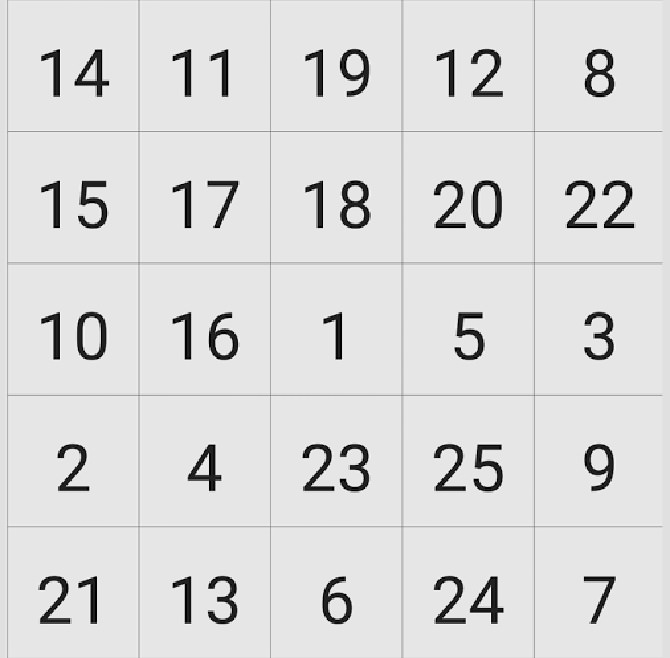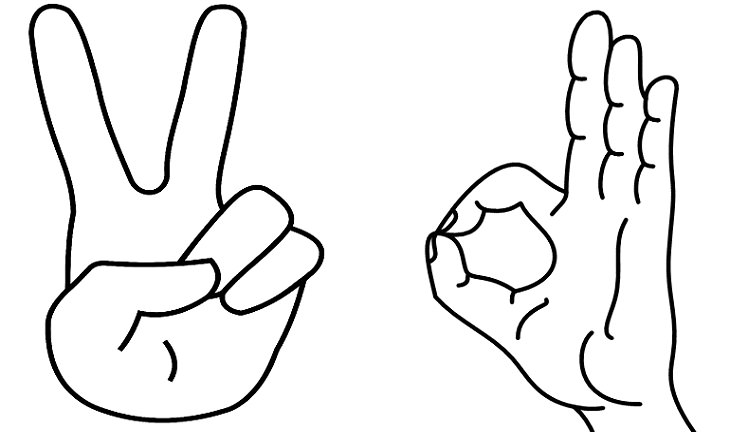9 Exercises to Improve the Mind
Just as exercise improves our muscle’s
fitness, endurance, and ability, neurobic exercises improve memory
retention, ability to multitask, and protects the brain from the damages
of aging. The goal of these exercises is to change our way of thinking,
to force us to act or think in new ways and to expose us to situations
and feelings we have not yet come across.
It may sound complex and difficult to perform, but they can be done very
easily, and we've collected 9 tips and exercises for you to take on
today. Once you start doing these exercises regularly, the nerve cells
in your brain will begin to undergo processes that will improve its
overall functioning, protect it from diseases like dementia, and
significantly improve the quality of your life.
1. Challenge your brain with conflicting
verbal and visual information
Beyond the strengthening and training that new information provides to
the brain, we can try to challenge it with various exercises that
improve our ability to concentrate, move quickly between similar but
different tasks, and deal with confusing situations.
Sample exercise: In the picture below, there is a list of colors that
are not the same color of the word written. Start from the top right
corner and say the name of the color that’s written and not the color
you see. When you reach the end of the list, read it again from the
beginning, only this time, say the color of the written word, not the
word itself. At first, it will be very difficult for you to do this, but
after some practice, you will find that your brain has succeeded in
adapting its thinking and has gained significant training.


2. Draw with both hands

For this exercise, you need two sheets of paper, or one large piece, and
two pens or pencils that you are comfortable holding. Now try drawing
two different geometrical shapes on both pages with both hands. If this
is too difficult you can try to draw the same shape, and if the exercise
is too easy, you can try to write different letters. The important
thing is to ensure that you use both hands simultaneously, as this
develops complex thinking, improves the ability to handle multitasking,
and encourages the activity of both hemispheres of the brain.
3. Read aloud to others or to yourself
If you and your children or your partner want to spend quality time
together while strengthening your brain, just take out a favorite book
and get ready to train. Decide how much you’ll read (a page, two pages, a
chapter etc.) and then start reading the book to your children or
partner. Once you finish, switch roles, and that way you’ll be able to
enjoy a neurobic exercise that contains two important actions; this is
the act of reading aloud, forcing you to pronounce complex words, to
read every word without just skimming, and to say aloud the information
that your brain has just absorbed.
Listening to another person reading a story is also an activity that
strengthens thinking because information obtained through the ears
stimulates imagination and thought in a way which is different from that
of information received through the eyes. If you want to simply enjoy
the benefits of listening to stories you can purchase audiobooks from
the Internet. Additionally, some audiobooks are available for free.
4.Scattered number tables are another visual
way to easily train your mind and brain and you can make them yourself
or even ask your children or grandchildren to help you prepare a few.
The purpose of this exercise is very simple: find the number 1 and then
look for all the other numbers in ascending order up to the number of
squares in each table - in the example below you need to look for 1- 25.
Focus your eyes on each number and don’t use your fingers to guide you.

This exercise focuses on improving our brain's ability to absorb and
process the data we receive from our peripheral vision.
5. Eat with Chopsticks
Not every brain strengthening exercise session needs to be at a time
specifically set aside for it. Even going out to a family meal can be a
great opportunity to break routine and go for a light neurobic workout.
For example, the next time you go to an Asian restaurant, try using
chopsticks instead of a knife and fork as you would normally do.

Beyond the fact that this is a new action that will challenge you to
concentrate and use both senses of touch and sight in an unfamiliar way,
it will also help you concentrate more on your food and thus prevent
overeating. You can also use chopsticks at home to eat everything from
olives to cake.
6. Practice meditation
One of the most common recommendations for neurobiological training is
also one of the simplest, and studies by Harvard University, the US
Department of Health, and the Mayo Clinic have proven the benefits of
meditation many times. Even global corporations like Google, Nike, and
Apple offer meditation classes and exercises for employees at all levels
of the company.

The reason for its effectiveness is that our brain is constantly working
and generates about 70,000 thoughts a day, the great part of which
repeat themselves daily. The mental cleansing and relaxation that
meditation provides us with help reduce the mental load our brain faces,
therefore improving its long-term functioning along with other benefits
such as improving concentration, mood, memory, and many other important
functions.
7. Use your hands
Sometimes it takes our brain time to jump from task to task quickly and
perform various actions without getting confused when we haven’t given
it substantial “resting time”. The time our brain needs to go from task
to task can be significantly reduced and our concentration can be
enhanced by simultaneously gesturing with both hands.

For example: Try making a “V” sign with your left hand and then create
an OK with your right hand as shown in the picture. Now comes the
challenging part: try replacing the V with the OK sign and vice versa at
exactly the same time. This action is likely to be very difficult, but
the longer you work at it and strengthen your brain, the easier it will
become.
8. Take advantage of apps
Some may argue that modern technology is to blame for us not exercising
our brains as much as we did in the past, but this is not entirely true.
For example, there are a number of free smartphone apps that can help
you learn new information on a variety of topics, practice new
languages, learn the history of the world and drill your memory. All
these are great and fun ways to do a neurobic workout and they will
improve much more than just your thinking ability.
9. Mute the TV
We recommend you perform this next exercise when you're watching TV
alone. Mute your television and just watch what’s happening on screen.
Keep watching and try to understand what’s going on and how the plot is
progressing just based on the visual information you are taking in. Once
the time you’ve set for this exercise has passed, go back to watching
the movie or show with the volume on as you would normally. Check if you
guessed the plot correctly. If you were wrong, try to think of why, and
how you can hit the nail on the head the next time around.
Labels: advantage of apps, draw with both hands, eat with chopsticks, exercises to improve the mind- mute TV, meditation, scattered no. tables.read aloud to self/ others, use your hands

0 Comments:
Post a Comment
<< Home